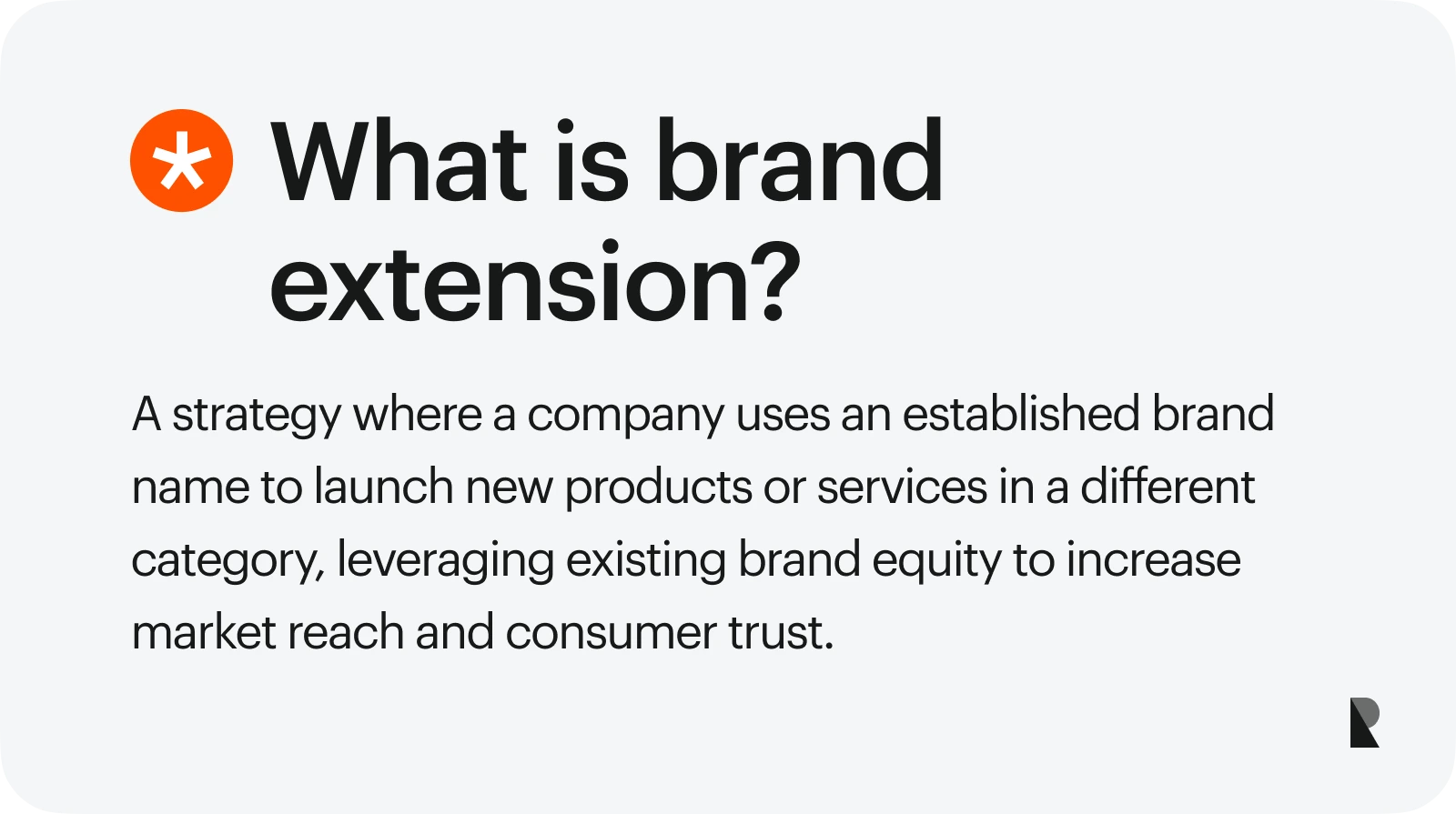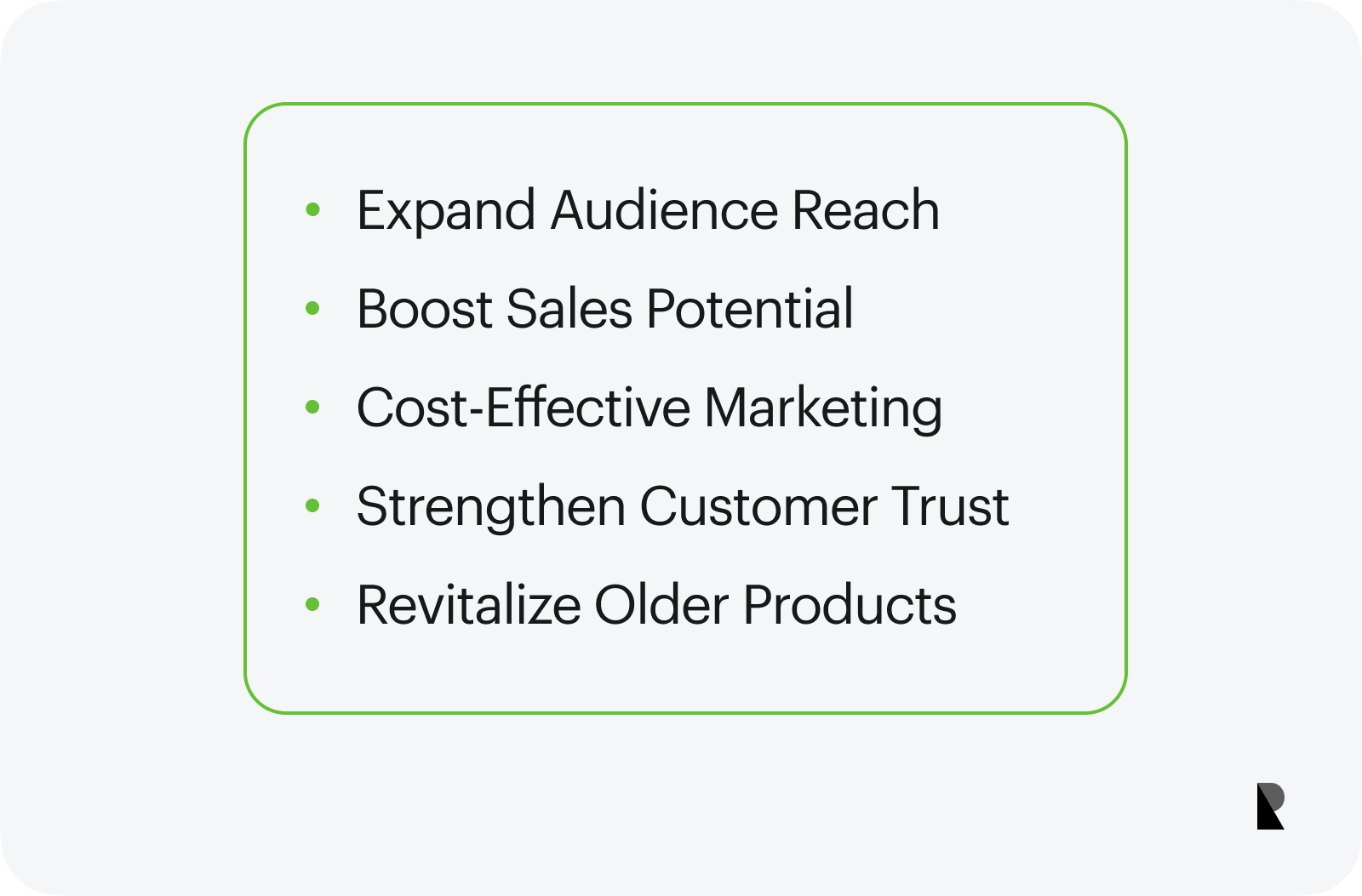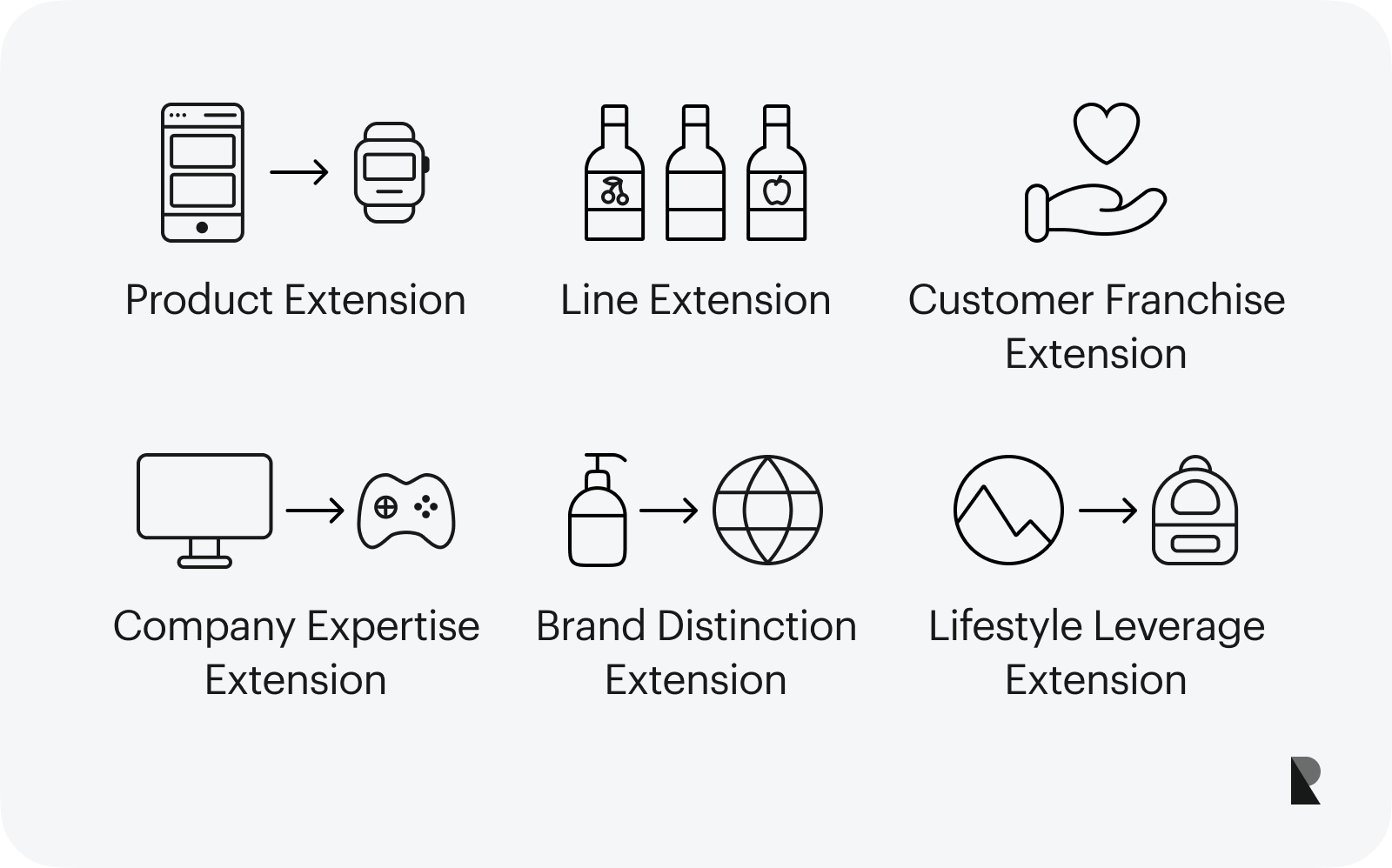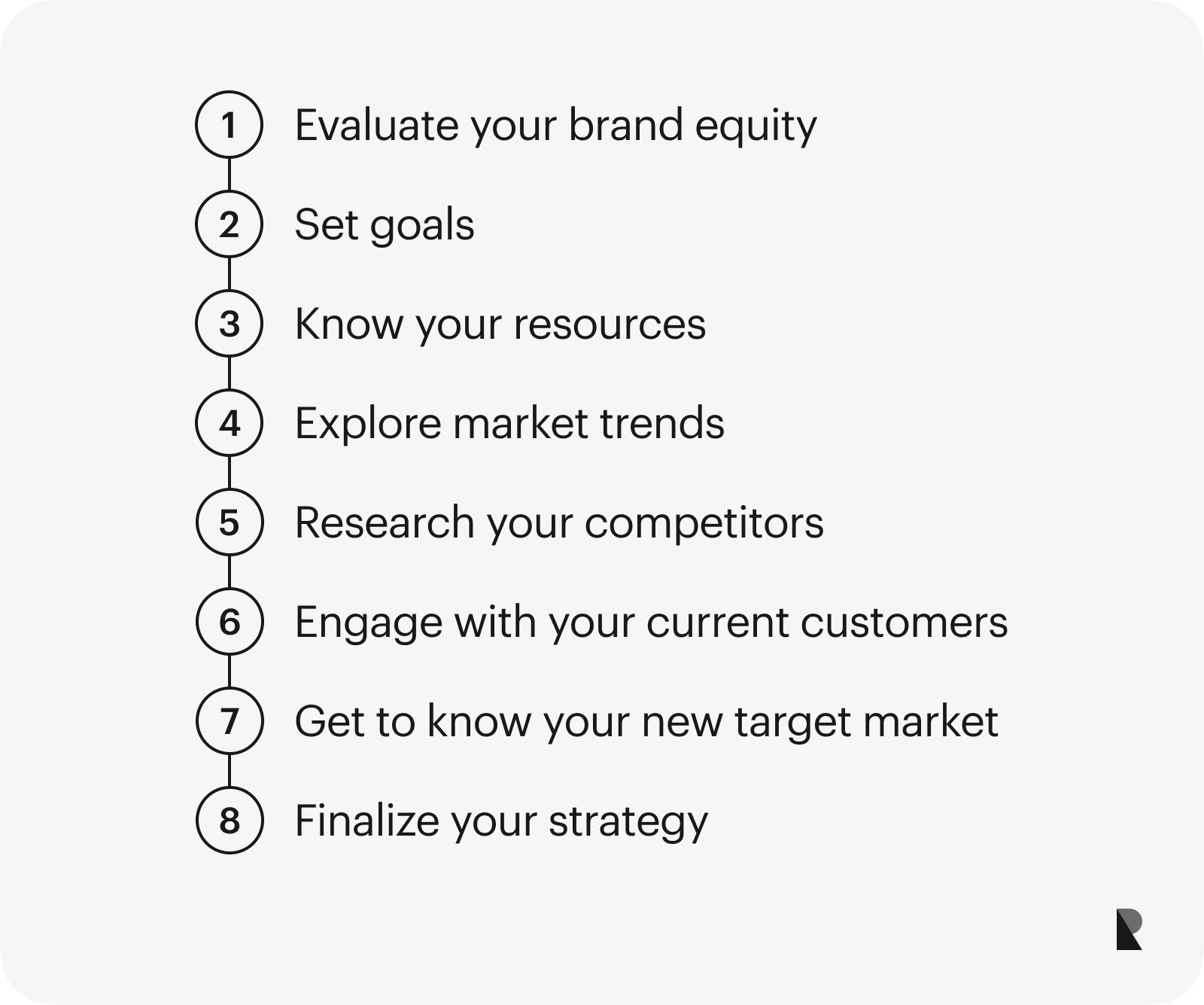Defining Brand Extension

Many of the major brands in today’s market use brand extension to continually experience growth in their company. Brand extension — also known as brand stretching, is a major factor in their success, but in order to understand how this makes a difference we have to be able to define it.
What is brand extension?
Brand extension is a marketing strategy in which a company uses its established brand name to launch a new product or line of products.
The key to the growth of any business is consistent expansion or stretching. Companies that stagnate or rely on the same product to stay afloat will quickly fall behind others that are regularly evolving.
Brand extension is exactly that—evolution.
If a company has achieved success with a flagship product, or line of products, it may use this already established equity to help launch new products. Being able to rely on successful brand engagement and customer loyalty provides a fantastic platform for any company looking to release new products under its brand.
Successful brand extension can help a company broaden its reach to new demographics, improve its customer base, gain new business contacts, increase sales, and boost its overall profit margins.
Like anything, there can be both benefits and risks to brand extension. Let’s investigate a few of both.
Benefits of Brand Extension

Products can hit a new audience.
Successful brand extension can allow companies to target new customer demographics while still keeping their brand recognizable.
It can lead to an increase in sales.
Hitting new audiences, means garnering greater interest. Greater interest gives the potential to increase sales as products will be reaching more people.
It’s an inexpensive form of marketing.
If a parent brand is launching a new product, or line of products, it likely means they’ve achieved prior success. Launching new products will spark interest and excitement from current customers, leading to an increase in word-of-mouth advertising—meaning near enough free marketing.
It can leverage customer loyalty and trust.
Customers who have already established a relationship with a trusted brand are far more likely to be open to trying new products launched from the same brand, and organizations should solidify this advantage by collaborating with a corporate brand strategy agency that helps translate existing loyalty into coherent, future-proof extensions.
It can bring attention to prior products.
Have you ever listened to a song, loved it, and then immediately searched for other songs by the same artist? Brand extension can work in exactly the same way. If a new product is successful, new customers will then likely look further into prior products, resulting in another method of inexpensive marketing.
Risks of Brand Extension
It’s clear to see the benefits brand extension can have towards achieving growth in a company. But are there any potential risks that come with it?
Let’s investigate a little further.
It can alter the brand identity of a company.
While successful brand extension marketing can lead to an increase in exposure and hit new audiences, if a new product deviates too far from the identity the brand has forged, customers may experience different brand messaging and feel their relationship with the brand has weakened. Ensure you’re sticking with your core brand identity and it’s an extension to a current brand, but not a new brand entirely.
It runs the risk of over-saturation.
If a brand attempts to delve into too many new markets, it could lead to the possibility of brand dilution—meaning audiences may tire of seeing a particular brand across too many markets.
Too much focus on brand extension could lead to a lapse in marketing.
Smaller companies that might not possess the same financial resources as larger ones may be too dependent on releasing new products in the hope of increasing interest. This could mean other methods of marketing are neglected, and could cause a collapse in sales.
Brand extension marketing has many benefits that outweigh any potential risks, but it’s important to understand what it is, and how it’s implemented successfully.
Types of Brand Extension

Brand extension isn’t limited to simply the release of a new product, there are varying good brand extensions that can be utilized to bolster an original brand.
Let’s take a look at a few examples.
1. Product Extension
Product extension is when a brand releases new products separate from what is currently being offered. Successful companies want to avoid tarnishing their brand loyalty with current customers, so a product extension will often be a secondary product to what is already out there—such as Apple releasing watches compatible with only their smartphones.
Product extension is viewed as a low-risk, low-cost way to meet the needs of different customer segments and attract buyers who may have different preferences. Potential drawbacks of product extension lie in the possibility of over-saturating the market or running the risk of a lesser-received new product undermining the quality expected of the brand.
2. Line Extension
Line extension refers to businesses offering an extension to an existing product line. For example, Coca-Cola has released varying flavors of its traditional cola flavor products such as cherry, vanilla, zero, etc. These are extensions of a current line of products rather than an entirely new product—this is an example of line extension.
Line extension can be a successful strategy as it can create a larger shelf presence for already established brands. A risk associated with the strategy lies in market oversaturation. Too many similar products on the same shelves can be overkill to customers, and if not deployed intelligently, line extension can cause such an effect.
3. Customer Franchise Extension
Customer franchise extension—also known as customer base extension, is when a brand uses its already established and loyal customer base to launch products beyond its current product category that still target the same group of customers.
This strategy allows a company to expand its product inventory with a greater chance of success due to the trust that's already been developed with a specific demographic. For example, Nike offers athletic wear and shoes for almost any sport. Customers that know and trust their tennis shoes are also more likely to trust their soccer cleats—a perfect example of leveraging brand loyalty. Customer franchise extension still comes with risks. If a new product is less well-received, it may run the risk of tarnishing brand identity and customer loyalty.
4. Company Expertise Extension
Company expertise extension is where a company utilizes a known aspect of their brand or specific area of expertise to create a related product category. For example, vacuum company Dyson—known for their innovative design and high quality products, have now announced the release of air purifying headphones. This is a great example of an established and successful company leveraging its expertise to build excitement around a new product release.
When exploring this form of marketing and product release, it’s also important to focus on maintaining brand identity, as that’s ultimately what will act as the firepower behind sales.
5. Brand Distinction Extension
Brand distinction extension is when a company known for its specific benefits or qualities leverages its prowess to serve different industries using the same competitive advantages that brought its initial success.
One way a company can do this is by offering its products to a new demographic or customer base requiring a certain product based on their geographical location—such as selling moisturizer or hand cream to an area that sees a much drier climate.
6. Lifestyle Leverage Extension
Brand extension via leveraging a lifestyle occurs when a culture is created for consumers that revolves around a set of values or interests. Customers that are supporters of certain hobbies, sports, or lifestyle choices are going to flock towards a brand that centralizes around them.
A perfect example of this form of extension comes from outdoor adventuring company, REI. REI has successfully built a brand image around what it’s most passionate about—the outdoors. Due to effective marketing, a strong brand identity, and a plethora of tried and trusted products, REI has built a customer following that few companies can rival.
Once a company has created a brand image constructed through leveraging a lifestyle, they can expand to offer further products that help its customers embody that lifestyle. This helps create a larger product line, while also forging a stronger brand identity.
Building a Successful Brand Extension Strategy
We now know what a successful brand extension strategy looks like, and what it can do for your business, but it’s important to understand how to properly plan and avoid any possible banana skins that can occur.
Let’s look at 8 key steps that will help you implement a strategy other brands will be jealous of.

1. Evaluate your brand equity
Before you put pen to paper and really start planning your strategy, you’ll have to survey whether your brand is in a strong enough position to be able to sustain any changes or additions.
You’ll also need to establish what your strengths are, how you will preserve them, and how they can be built on in your strategy.
It’s difficult to progress without ensuring the strength of your brand initially, so be sure to take a peek at things like customer reviews and customer retention, as well as studying metrics such as store/site traffic, search volume, and how much recent growth your business has seen.
2. Set goals
As we learned above, a brand extension strategy can improve your business in other ways as well as simply bringing in more income. Have a think about what you want to achieve with your strategy.
Are you looking to expand your reach? Aiming to fill a gap in the market? Are you answering customer demand? Or could it be that you’re trying to instill some hype around your brand or adjust your brand image slightly?
Whatever your goals are, make sure to clearly set them as this will keep you on track and make it easier to plan your strategy.
3. Know your resources
How equipped is your business to successfully implement your plan? This is such an important question because you can’t start a car without an engine.
Have you got enough cash to invest in your strategy? If less than expected, think about adjustments you might be able to make to keep your plan alive.
Do you have any investors contributing to the implementation of your strategy? If not, and funds are still a little tight, you may be able to consider partnering with another business to implement a brand extension.
Whatever you decide on, be sure to understand the resources you have available to you so you don’t plan out of budget.
4. Explore market trends
Have a look at what’s currently got customers buzzing. Trends will ebb and flow, but implementing a strategy that’s relevant to the current market will certainly get you off to a good start.
Make sure you’re reading relevant media outlets and checking through social media outlets to learn what’s rocking the worlds of customers. Following and getting to know any industry influencers will also keep you relevant.
5. Research your competitors
There are likely a few competitors out there that might seem as though they have things all worked out. Do some research and discover what’s working for them. This will give you an idea of what you need to succeed and you can elaborate on their already successful ideas by adding your own touches.
6. Engage with your current customers
There won’t be a better resource for discovering where you are both succeeding and falling short with your current products than your exisiting customers. The customer always knows best, and this is especially true when it comes to discovering how to go about your brand extension strategy.
Engaging with your current customer base will also provide you with an idea of what the current market needs are, giving you an added sense of direction.
7. Get to know your new target market
Targeting a new market can feel like swinging in the dark. If you don’t get to know your new targeted audience, you won’t know what gets their attention, and ultimately what’ll get those credit cards swiping. Spend some time to research your new intended audience through social media, product reviews, forums, and any links you may have to influencers. This will also help to grown your brand awareness, and put you on the radar of your new market.
You’ll want to find out such things as customer demand, current similar products, and what the strengths and weaknesses of your new competitors are.
A few complemntary products for your new audience to experience can also help you gain valuable insight to customer demand.
8. Finalize your strategy
Once you’ve been through the above list, put everything together and create a written plan for your brand extension.
Make sure you’ve carefully considered potential costs, risks, and whether you have the resources and infrastructure required to successfully launch your brand extension.
Refer back to all your market and competitor research to ensure you’ve got everything in place and ready to go, and you’re on your way to success.
Brand Extension for the Win
So there you have it, an idea of how to launch your brand extension strategy with maximum success. It’s a competitive market out there, but with the right planning and execution, our guide will have you well on your way to success.
Mar 6, 2023
